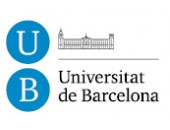Some Reflexions on “Creative Europe”
Philip Schlesinger, Centre for Cultural Policy Research/CREATe, University of Glasgow
This paper considers how creative economy policy navigates tensions between culture and economy. I have bracketed conceptual and theoretical issues concerning definitions of culture and economy, as well as wider debate about the cultural economy and how this relates to questions of identity and memory, not least because much of this territory is addressed by other CulturalBase Discussion Papers. This version has been abridged from a much longer paper. Its focus is on the EU’s approach to culture. The EU’s cultural competence has always been complementary to the national management, protection and promotion of culture and identity by Member States. The lodestar statement is embodied in Article 151 of the Treaty of Amsterdam 1997:
The Community shall contribute to the flowering of the cultures of the Member States, while respecting their national and regional diversity and at the same time bringing the common cultural heritage to the fore. (Article 151 EC 1997)
‘Unity in diversity’ is routinely invoked as a key point of reference in discussions of cultural policy. A multi-level polity, the EU is a site of political compromise, and in the field of culture the subsidiary interests of the Member States limit the actions that can be pursued, as well as their scope.
For some, the slogan ‘unity in diversity’ ‘reflects a kind of “postmodern communitarianism” designed to overcome the pitfalls of previously essentialist and Eurofederalist concepts of Europe’ (Shore 2006: 21) with cultural competence seen as ‘the political arm of nation-building at the European level’ (Shore 2006: 19). But it is economic instrumentalism rather than identity-building that presently prevails. The pursuit of the single market – to achieve integration and harmonization across national territories – has always been in tension with the need to recognise and respect the actually existing cultural diversity of the Union (Barnett 2001).
‘Creative Europe’ is the framework constructed for the field of cultural policy from 2014-2020, a pragmatic label for two streams of activity kept quite distinct until 2014 – cultural programmes and audiovisual programmes. Of these, audiovisual trade is a key EU cultural policy arena (Doyle 2014; Schlesinger 1996). In the digital age, established policy frameworks are being reframed so ‘what was formerly known as the audiovisual sector is now understood to be part of the global creative and digital industry’ (Crusafon 2015: 96).
European policy discourse is dominated by a predominantly instrumental approach towards the economic and social benefits of culture, during the past decade wrapped in the EU variant of the fashionable language of the ‘creative economy’. This overshadows an alternative framework that invokes culture for building communities within the Union that might lead to a common European identity (but certainly not one modelled on that of the nation state).
I shall first outline the range of cultural activity undertaken by the EU. Second, I shall discuss key aspects of audiovisual policy and its present implications in the context of international trade. Third, I consider how the EU developed ‘cultural and creative industries’ (CCIs) policy, incorporating an expressly economistic and market-oriented conception of culture.
Creativity and heritage I
Vision Document. The Digital Single Market Philip Schlesinger (collaboration of A, Uzelac & C. Waelde) The Digital Single Market is a key plank of EU policy in the cultural field....
Read moreCreativity and heritage II
Vision Document. Cultural Creativity and Value. Philip Schlesinger There is a tension at the heart of current debate on the value of culture. It is focused on the relations between...
Read more







